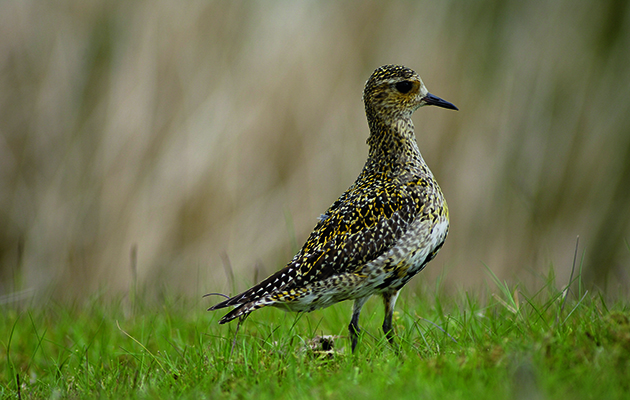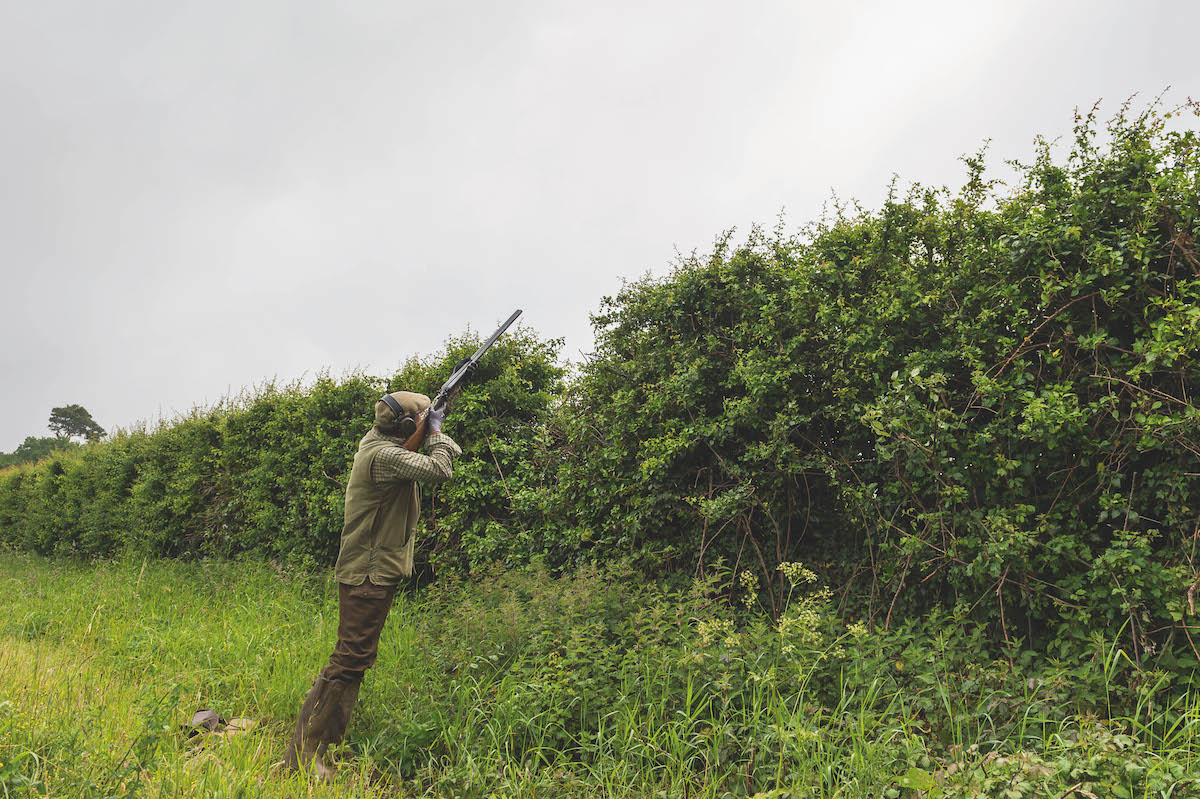Golden plovers: a rare asset
Still on the UK quarry list but rarely shot, golden plovers are almost extinct in some countries. How are they faring here? Graham Appleton finds out

We never know how many migrant birds will return each autumn, but I am anticipating a shortage of golden plovers in the west of the UK, because this has been a strange spring and summer in Iceland.
The national picture will be complicated by the fact that our winter flocks are made up of birds from as far away as Greenland and Russia, as well as local ones that breed in the hills of all four countries of the UK.
Perhaps our birds will have had a better summer than their Icelandic cousins? I hope so because there is something magical about the sound and sight of a golden plover in the uplands. The vialli-vialli song of the male as he displays in the spring and the plaintive squeak of a parent, worried that a human has come too close to a carefully hidden nest or chicks, are key elements of a moorland soundscape. British birds make up 80 per cent of the local subspecies of golden plovers (Pluvialis apricaria apricaria), with perhaps between 38,000 and 59,000 breeding pairs, and this concentration of the subspecies in one country justifies their amber listing within the UK’s Birds of Conservation Concern 3, produced in 2009.
When a species is breeding in fewer areas, its vulnerability is increased. This lowland subspecies has been lost from Belgium, the Netherlands, Poland and much of England, and is close to extinction in Germany, Denmark and Lithuania. Potentially, the UK estimate is too high, as it is based on figures from 15 years ago.A more recent survey in Wales (2007) found only 36 pairs, while the maps in Bird Atlas 2007-11, published by the British Trust for Ornithology, show a shrinkage of the species’ range, with losses particularly obvious in southern Scotland and in Ireland. Landowners and managers with breeding golden plovers are conserving an increasingly rare asset.
Autumn arrivals

The flocks of migrant golden plovers come to the UK from as far away as Greenland and Russia. Pic credit: D. Kjaer
The golden plovers we see in winter flocks come from three different populations. The Icelandic group includes birds from Greenland and the Faroes; there are local birds from across the British Isles and from the near Continent; and there are northern continental birds from Scandinavia through to Russia.
There is a difference in the summer plumage of birds that breed further north, with ours having a less-distinctive black belly and chest than their northern relatives. After the autumn moult, however, there is little to distinguish birds from different countries, as they swirl in flocks of hundreds or even thousands.
During the winter months, British golden plovers can be found in both agricultural fields and along the coast, particularly on mudflats. The proportion of birds seen on estuaries has increased over the past three decades, as has the number to be found in the east of England. It has been suggested that higher winter temperatures mean that birds arriving from continental Europe no longer need to travel to the warmer half of Britain. The move to coastal habitats could either be linked to easier conditions or could reflect badly on invertebrate populations on arable fields.
Using those big eyes
Winter flocks of golden plovers across England spend a lot of the day roosting, typically on open, ploughed fields that provide clear views of approaching predators. As darkness falls, they spread out over harrowed fields, sugar beet stubbles and growing crops, using their big eyes to find worms and other invertebrates in low light conditions.
Their behaviour was studied by Simon Gillings, of the British Trust for Ornithology and University of East Anglia, who found that birds keyed in on fields that had been recently spread with manure and they preferred large fields with open boundaries. Daytime feeding is more likely in cold weather and after overcast or moonless nights.
In the west of Britain and in Ireland, the core population has its origins in Iceland, where 300,000 pairs breed. Winter flocks become bigger in cold weather, as eastern birds are driven west by frozen or snow-covered ground. However, in extremely harsh winters, golden plovers and lapwings leave these islands and head for France, Spain and Portugal.
Iceland is a key area for golden plover; more than 50 per cent of the world’s birds breed there, in both lowland farms and in the volcanic heaths of the uplands. When these birds returned from Britain this spring, they found the earth was frozen. They sought warmth where they could find it, in town parks and even on garden lawns. Many died and those that were heading for the hills had to wait much longer than usual for the snow to clear.
It will be interesting to see whether there are lower Wetland Bird Survey counts in Wales and Northern Ireland this winter as a consequence.
Punt-gun prey
The golden plover is still a quarry species (1 September to 31 January), but shooting is not thought to have a significant impact on the population, though there are no UK bag counts to support this theory. In the days of the punt-gun, commercial hunters could harvest 100 or more birds in a single shot, but a modern-day wildfowler with a shotgun will do well even to get close to a flock of these nervous waders.
Golden plovers are a popular target in France, where very different annual bags of 15,000 and 63,000 have been estimated, from a wintering population of 1.5million birds drawn from as far east as Siberia.
The only other major European hunting nation is Portugal, where wintering numbers vary between 45,000 and 450,000 per year, depending upon the amount of frost and snow in France, the UK and Ireland. Perhaps an average of 31,000 is shot in Portugal per year.
How water tables affect golden plovers

During winter, golden plovers can be found in both agricultural
fields and along the coast. Pic credit: E. Janes
As well as a reduction in the range of the species (see main text), there is also concern that golden plovers are less able to breed successfully because of a lack of crane fly larvae, numbers of which have dropped as a consequence of historical drainage and with increasing temperature. In recent papers, the RSPB’s Dr Matthew Carroll and colleagues have shown that species such as golden plover, dunlin and red grouse are affected by changes to water tables, through insect supplies.
Though it is hard to deal with the effects of climate change, it is possible to increase water tables by blocking drains in peatland systems, to the benefit of crane flies, birds and the ecosystem. Scientists suggest that the benefits of restoring ecosystem moisture levels are likely to be greatest during dry years and at dry sites, when management can increase the resilience of upland ecosystems to warming and increasingly frequent droughts. Without intervention, the scientists suggest that falling water tables could cause 56 to 81 per cent declines in crane flies and between 15 and 51 per cent reductions in key species such as golden plovers, driven by lower chick production.
Two major economic drivers of drainage reversal are the improvement of water quality and carbon storage, but biodiversity can be a major beneficiary too.








